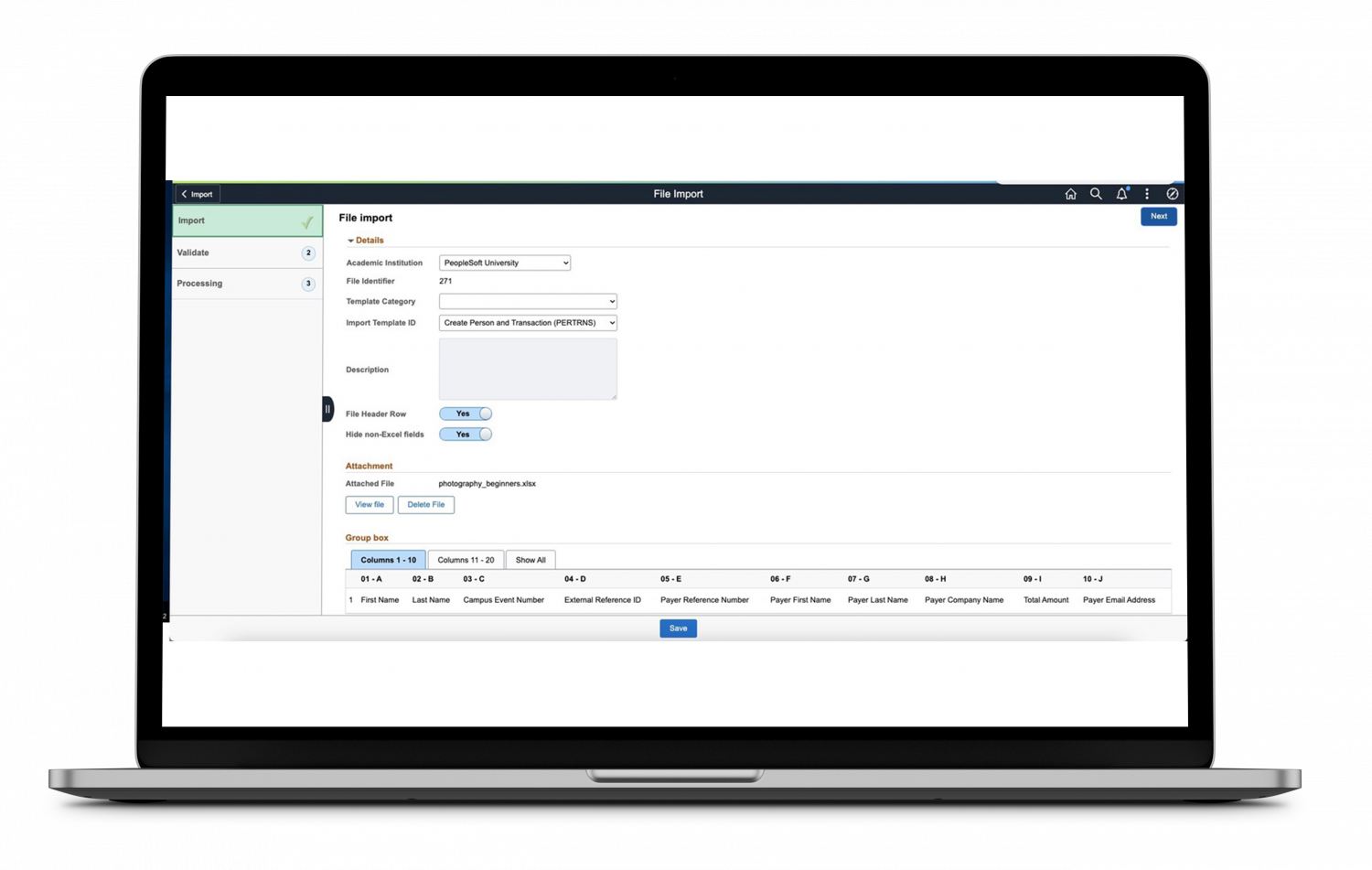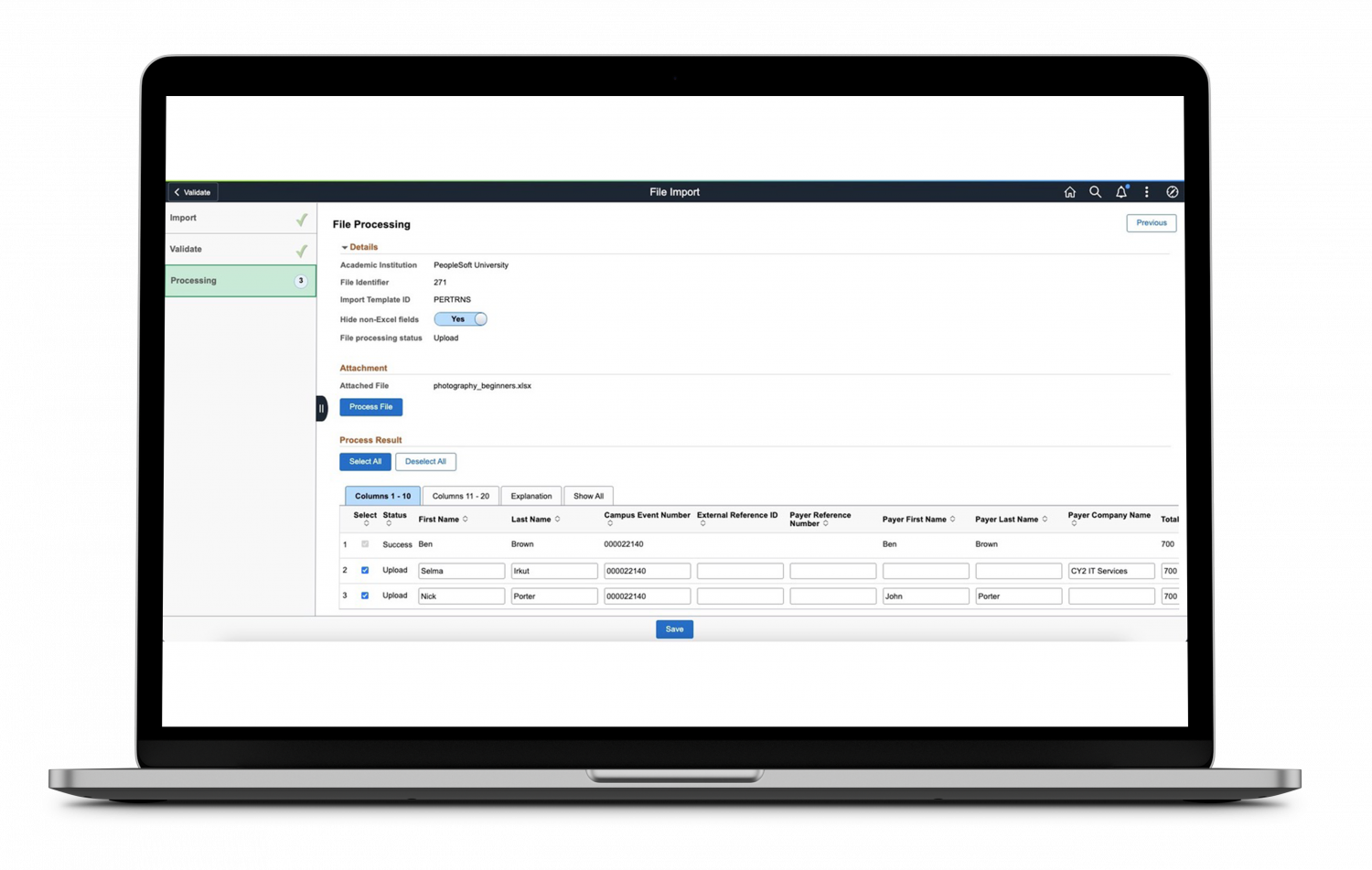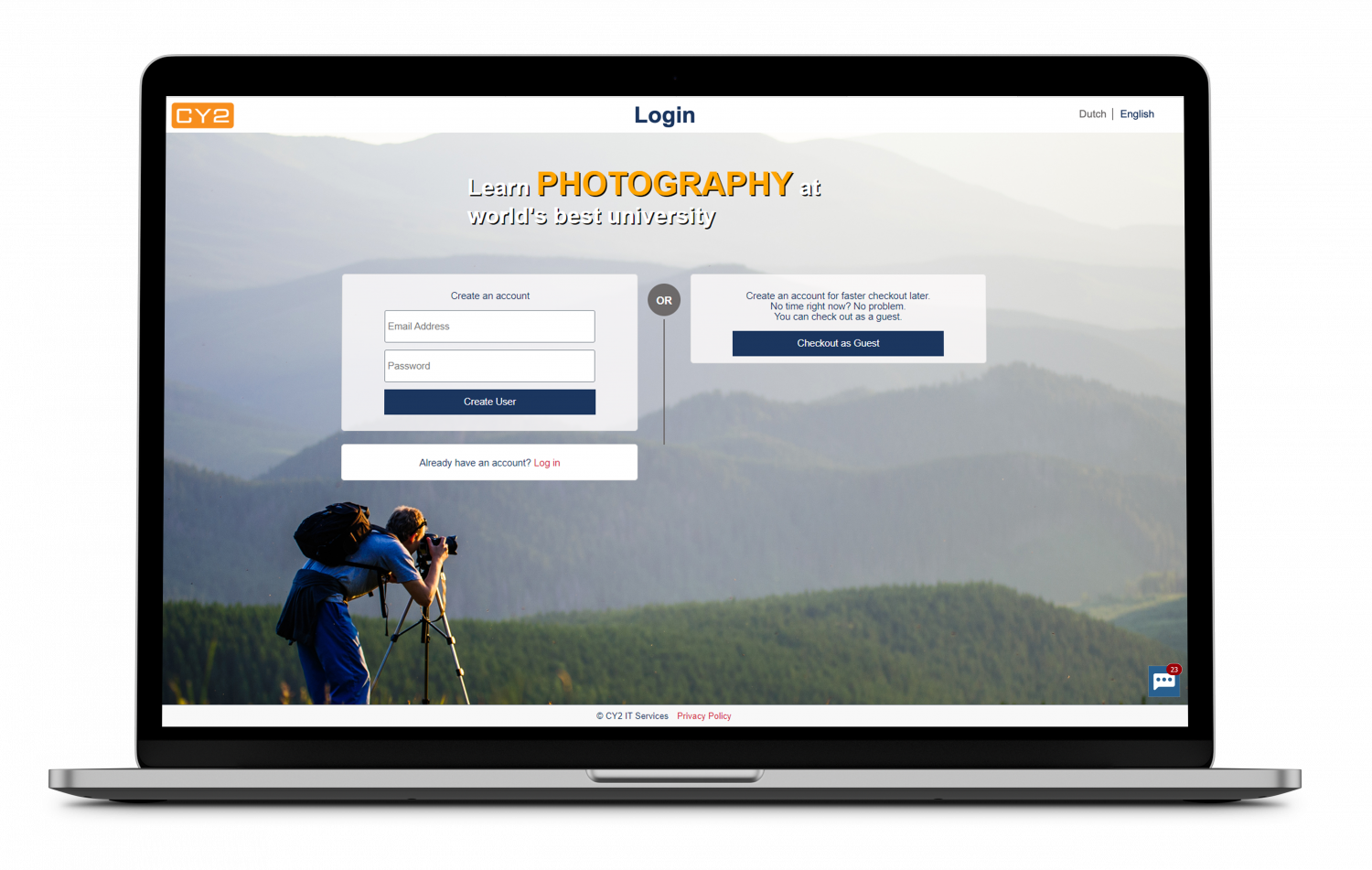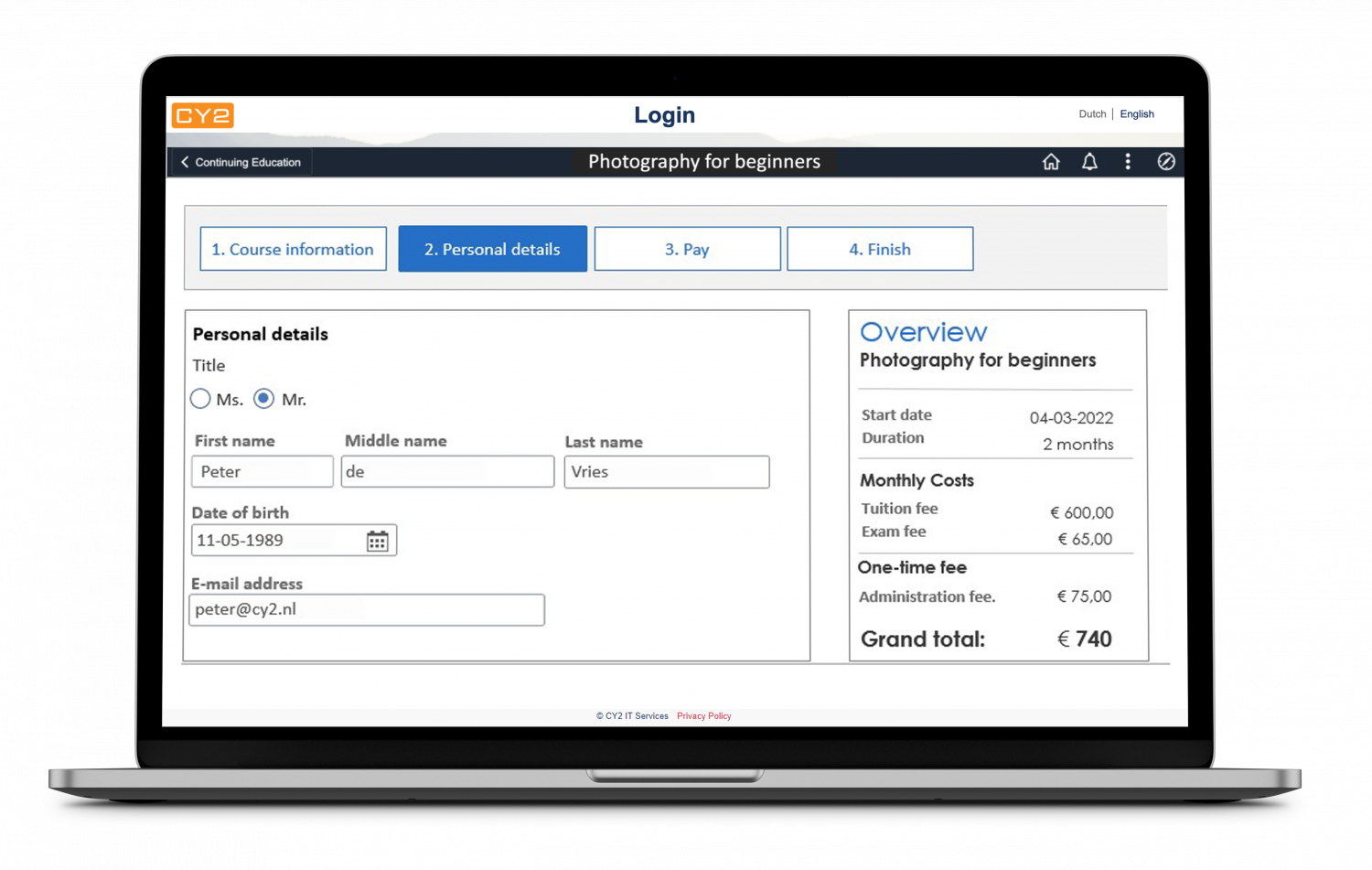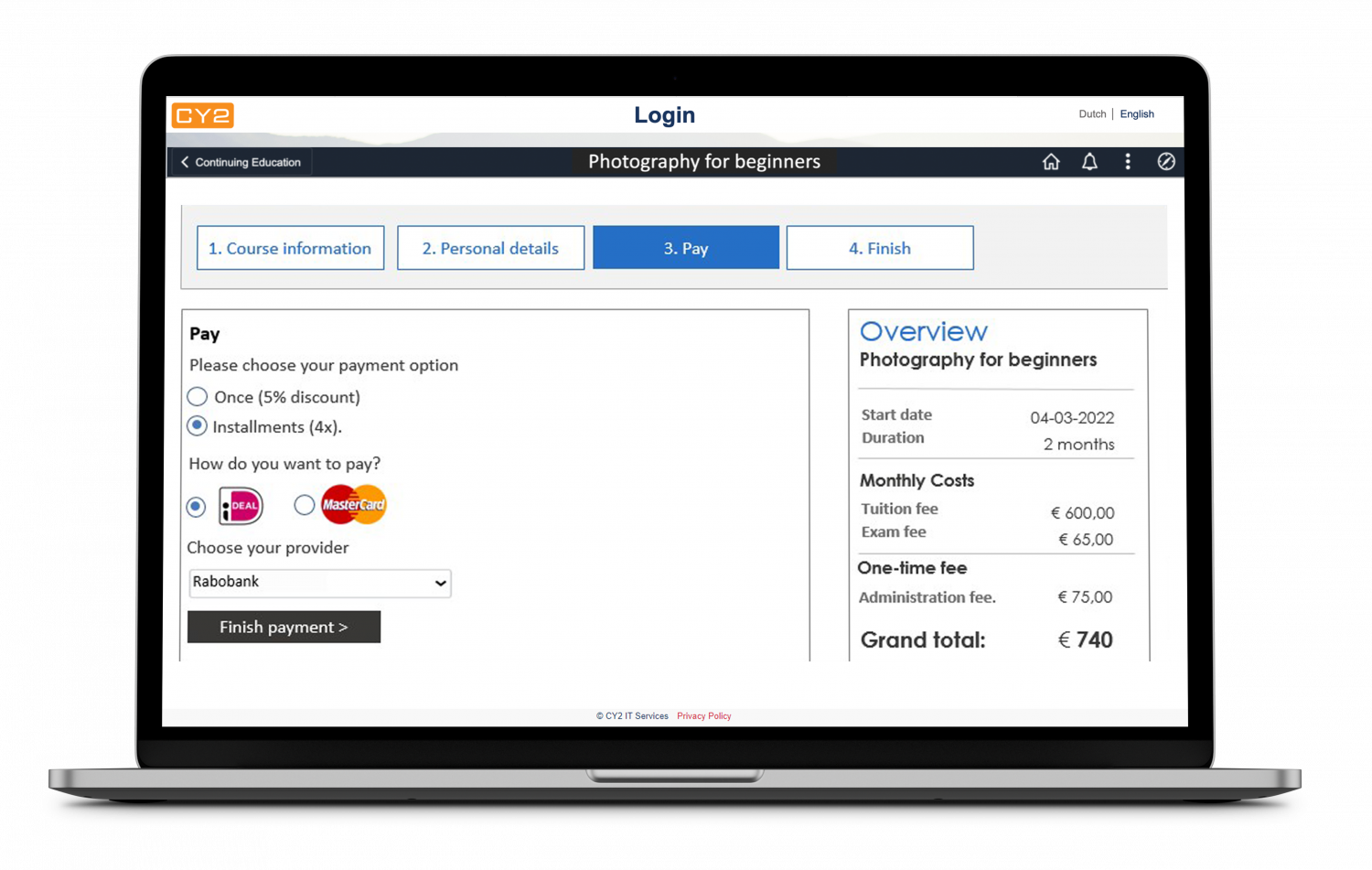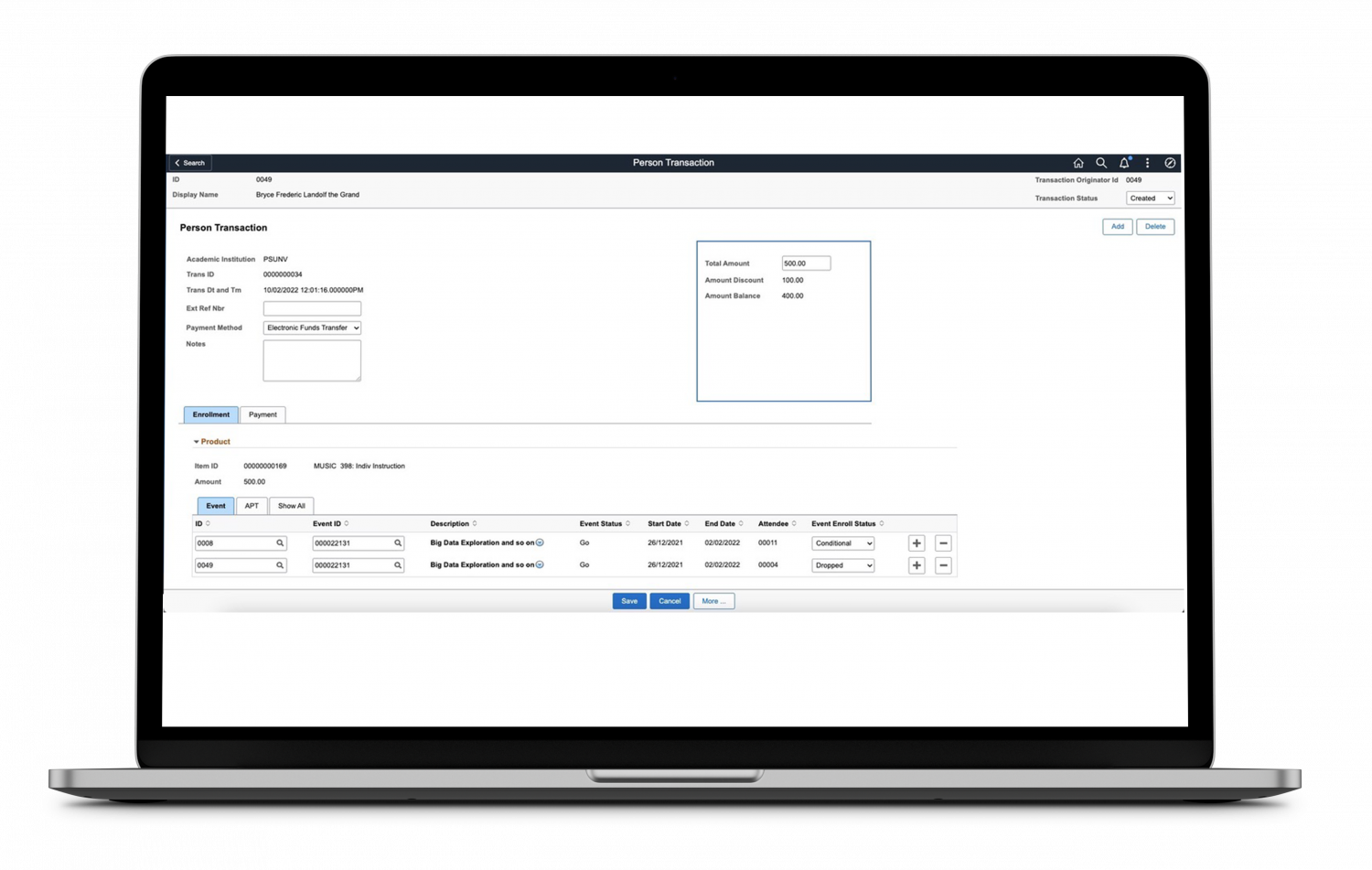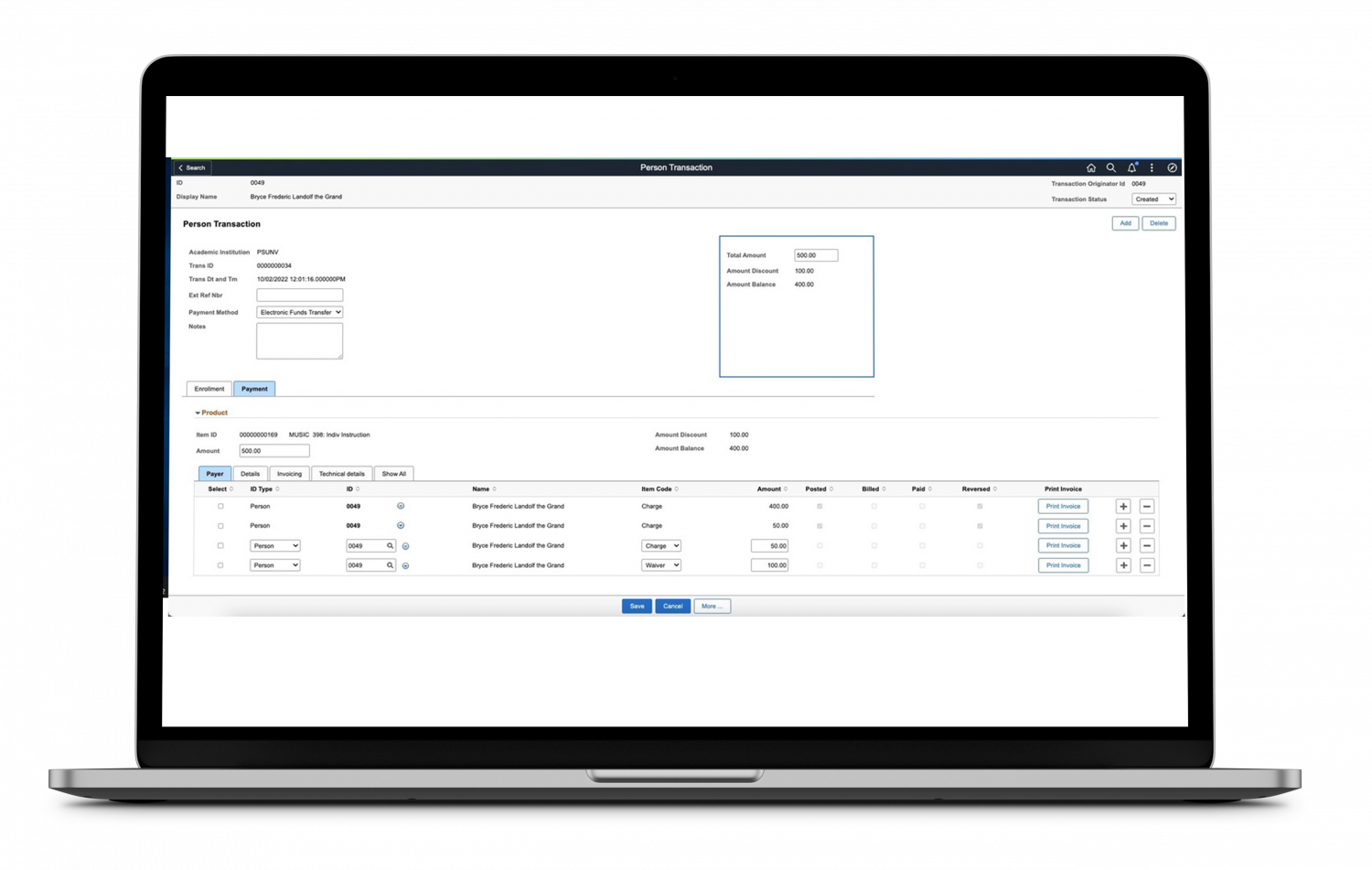Admissions for CE can be managed in different ways, we support having an external system like a CRM, external website of webshop providing us with data about the person and the products they want to buy. This data can be imported using our REST based API or using our excel based File Processing module. Next to these two integration capabilities, we have our own storefront / application form framework that institutions can use to receive applications from people wanting to buy CE products. The storefront would normally be linked to the general website of the institution and is able to accept incoming information about the product(s) the person is interested in. From the storefront, the person is guided to a login page where he/she can create an account – sign in as existing account holder or apply as a guest. From the login page, the application form opens to accept the information about the person. After filling in the required details, including online payment if required, the person submits the application and the administration will take over. The information is transferred to a staging area where search / match takes place after which the information is transferred to the actual transaction component.
